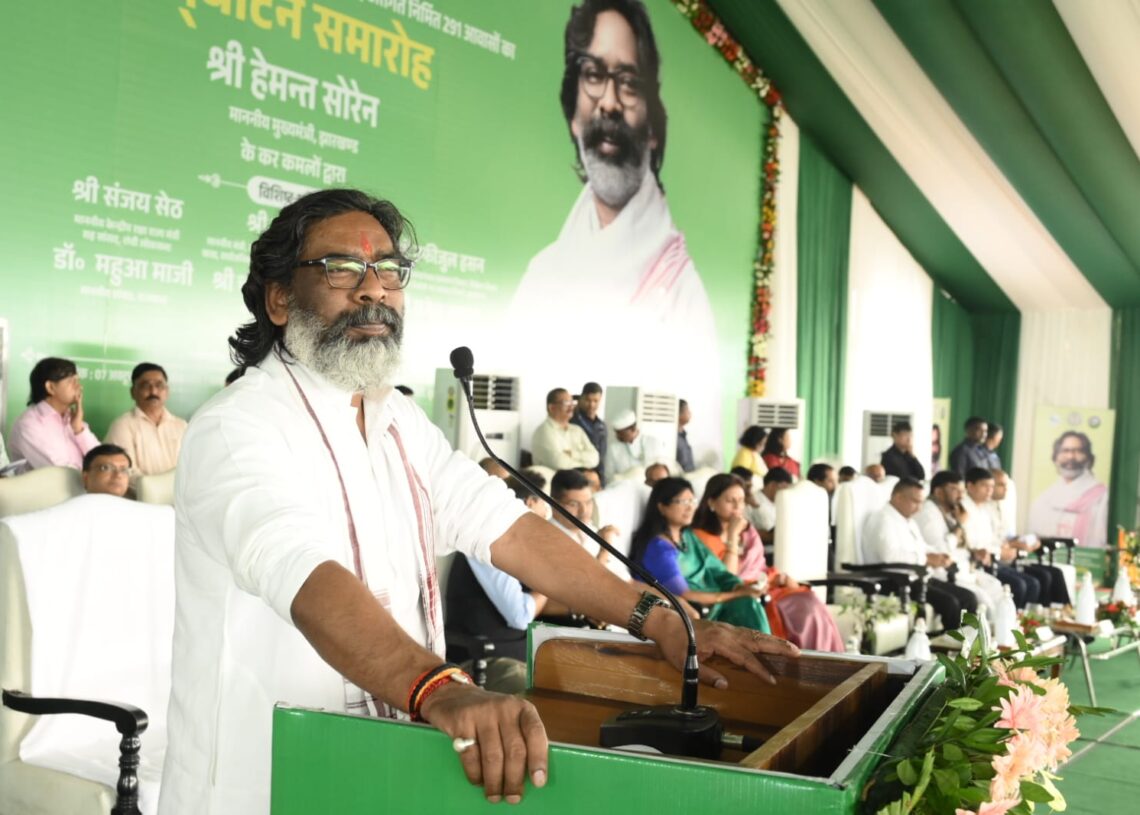SWAMI DIVYA GYAN
As Jharkhand approaches its upcoming elections, the political dynamics are increasingly complex and competitive. The ruling Indian National Developmental Inclusive Alliance (INDI Alliance) appears to face significant challenges as the opposition Bharatiya Janata Party (BJP) strengthens its outreach and strategic initiatives. This analytical report delves into the nuances of both parties’ strategies, supported by data and research to provide a comprehensive view of the current political landscape.
The Ruling Alliance’s Ground Game: Strategic Engagement and Vulnerabilities
-
Internal Disorganization
The INDI Alliance is currently grappling with significant organisational challenges. The coalition’s passive approach—waiting for the NDA’s ticket announcements—has left them scrambling as the election date looms. Research indicates that voter enthusiasm diminishes when coalitions appear disunited or indecisive. The delays in candidate selection and seat-sharing negotiations among the RJD, Congress, Left parties, and the JMM could alienate potential supporters.
-
Voter Perception and Sentiment
Recent opinion polls indicate that the INDI Alliance’s hesitance has led to a decrease in public trust. Voter sentiment is increasingly leaning towards stability and decisiveness, qualities that the BJP has successfully projected. The INDI Alliance must urgently articulate a clear, unified vision to counteract this trend.

-
Unity Among Left Parties
The unity among Left parties, which are seeking a minimum of five seats, poses both an opportunity and a challenge for the INDI Alliance. While this coalition can potentially consolidate votes, any failure to present a cohesive strategy could lead to fragmentation. Historical data shows that disunity within coalitions often results in a loss of voter confidence, which could be detrimental in a closely contested election.
The Tipping Point: Can the Ruling Alliance Maintain Its Advantage?
The current political dynamics suggest that the INDI Alliance holds a tenuous position in Jharkhand. Its challenges in grassroots mobilisation and strategic initiatives may undermine its standing among the electorate, while the BJP seeks to capitalize on these weaknesses.
-
Socio-Economic Factors
Socio-economic issues such as unemployment, education, and healthcare remain paramount for voters in Jharkhand. The INDI Alliance must effectively communicate its initiatives aimed at addressing these concerns, as the BJP has successfully highlighted its efforts in these areas. Data shows that voters prioritise candidates who address local issues directly, underscoring the need for the INDI Alliance to sharpen its messaging.
-
The Importance of Cohesion
The INDI Alliance’s ability to present a united front will be critical in the coming weeks. Research indicates that coalitions that effectively communicate a coherent message are more likely to engage undecided voters. The historical context of Jharkhand politics suggests that fragmented alliances can lead to significant electoral losses, particularly in a state where voter loyalty can shift rapidly.
The Countdown: Will the BJP Seize the Opportunity?
As the elections draw near, both the INDI Alliance and the BJP must navigate a rapidly evolving political landscape. For the ruling alliance, maintaining voter support will require urgent action, including finalizing candidates and solidifying seat-sharing agreements.
For the BJP, this is an opportunity to capitalize on the ruling alliance’s vulnerabilities. The party must continue to engage with voters and effectively communicate its alternative vision for Jharkhand.
Conclusion: A Race Against Time
In conclusion, the political landscape in Jharkhand is dynamic and increasingly competitive. The INDI Alliance’s challenges could undermine its electoral prospects, while the BJP’s strategic manoeuvres may position it favourably. As the election date approaches, both parties must navigate the complex interplay of local issues, voter sentiment, and coalition dynamics. The outcome of this election will not only shape the future of Jharkhand but also serve as a bellwether for national political trends. The stakes are high, and the strategies employed in the coming weeks will be pivotal in determining the direction of Jharkhand’s political future.










